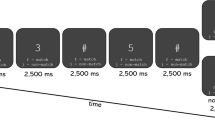Abstract
Falls among adults over the age of 65 years have become a growing concern. Two factors related to high incidence of falls in this group of adults are decreased head stability and impaired balance. Older adults’ level of control of head stability or balance is unknown when they must reorient their gaze. In the current study, ten older adults (69 ± 3.27 years) performed a gaze reorienting task while standing or walking on a treadmill. The task was the same as that used on young adults by Cinelli et al. (2007). The results show that older adults use a different strategy than young adults when reorienting gaze. Shoulder and hip rotations occurred synchronously when standing and were more variable when walking on a treadmill. As well, there was a larger difference between the onset of eye movements and body segment movement in the older adults. These differences can be accounted for by decreases in physiological subsystems. The visual presence of a visual target helped the older adults stabilize their heads-in-space by incorporating information from more than one sensory system.



Similar content being viewed by others
References
Bronstein AM (1986) Suppression of visually evoked postural responses. Exp Brain Res 63(3):655–658
Buttner U, Fuchs AF, Markert-Schwab G, Buckmaster P (1991) Fastigial nucleus activity in the alert monkey during slow eye and head movements. J Neurophysiol 65:1360–1371
Cinelli M, Patla A, Stuart B (2007) Involvement of the head and trunk during gaze reorientation during standing and treadmill walking. Exp Brain Res 181(1):183–191
Cromwell RL, Newton RA, Forrest G (2001) Head stability in older adults during walking with and without visual input. J Vestib Res 11:105–14
Cromwell RL, Newton RA, Forrest G (2002) Influence of vision on head stabilization strategies in older adults during walking. J Gerontol A Biol Sci Med Sci 57(7):M442–M448
Cumming RG, Klineberg RJ (1994) Fall frequency and characteristics and risk of hip fractures. J Am Geriatr Soc 42:774–778
Findley JM, Gilchrist ID (2004) Active vision: the psychology of looking and seeing. Oxford University Press, Oxford
Freedman EG, Sparks DL (1997) Activity of cells in the deeper layers of the superior colliculus of the rhesus monkey: evidence for a gaze displacement command. J Neurophysiol 78:1669–1690
Freedman EG, Stanford TR, Sparks DL (1996) Combination of the eyes and head: movement kinematics. Exp Brain Res 76:927–952
Goldring JE, Doris MC, Corneil BD, Ballantyne PA, Munoz DP (1996) Combined eye-head gaze shifts to visual and auditory targets in humans. Exp Brain Res 111:68–78
Hollands MA, Ziavra NV, Bronstein AM (2004) A new paradigm to investigate the roles of head and eye movements in the coordination of whole body movements. Exp Brain Res 154:261–266
Horak FB, Shupert CL, Dietz V, Horstmann G (1994) Vestibular and somatosensory contributions to responses to head and body displacements in stance. Exp Brain Res 100:93–106
Inglis JT, Horak FB, Shupert CL, Jones-Rycewicz C (1994) The importance of somatosensory information in triggering and scaling automatic postural responses in humans. Exp Brain Res 101:159–164
Kalesnykas RP, Hallet PE (1994) Retinal eccentricity and the latency of eye saccades. Vision Res 34:517–531
Keshner EA (2000) Modulating active stiffness affects head stabilizing strategies in young and elderly adults during trunk rotations in the vertical plane. Gait Posture 11:1–11
Keshner EA, Chen KJ (1996) Mechanisms controlling head stabilization in the elderly during random rotations in the vertical plane. J Mot Behav 28:324–336
Paquette C, Paquet N, Fung J (2006) Aging affects coordination of rapid head motions with trunk and pelvis movements during standing and walking. Gait Posture 24:62–69
Patla AE (1993) Age-related changes in visually guided locomotion over different terrains: major issues. In: Stelmach GE, Homberg V (eds) Sensorimotor impairments in the elderly. Kluwer, Dordrecht, pp 231–252
Peterka RJ, Black FO, Schoenhoff MB (1990) Age-related changes in human vestibulo-ocular and optokinetic reflexes: pseudorandom rotation tests. J Vestib Res 1(1):61–71
Pozzo T, Berthoz A, Lefort L (1990) Head stabilization during various locomotor tasks in humans. I. Normal subjects. Exp Brain Res 82:97–106
Russell P, Pearcy MJ, Unsworth A (1993) Measurement of the range and coupled movements observed in the lumbar spine. Br J Rheumatol 32:490–497
Stalenhoef PA, Diedeeriks JP, Knottnerus JA, Kester AD, Crebolder HF (2002) A risk model for the prediction of recurrent falls in community-dwelling elderly: a prospective cohort study. J Clin Epidemiol 55:1088–1094
Tang PF, Woollacott MH (2004) Balance control in older adultsl. In: Bronstein AM, Brandt T, Woollacott MH, Nutt JG (eds). Clincial disorders of balance, posture and gait. Arnold Publishers, London, pp 385–403
Van Herp G, Rowe P, Salter P, Paul JP (2000) Three-dimensional lumbar spinal kinematics: a study of range of movement in 100 healthy subjects aged 20–60+ years. Rheumatology 39:1337–1340
Author information
Authors and Affiliations
Corresponding author
Rights and permissions
About this article
Cite this article
Cinelli, M., Patla, A. & Stuart, B. Age-related differences during a gaze reorientation task while standing or walking on a treadmill. Exp Brain Res 185, 157–164 (2008). https://doi.org/10.1007/s00221-007-1266-8
Received:
Accepted:
Published:
Issue Date:
DOI: https://doi.org/10.1007/s00221-007-1266-8




